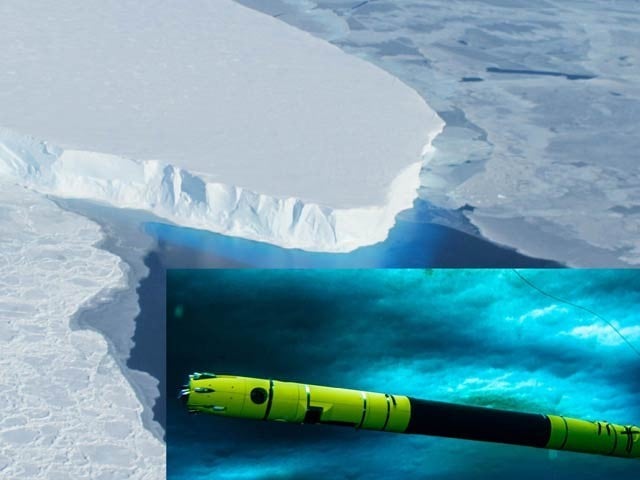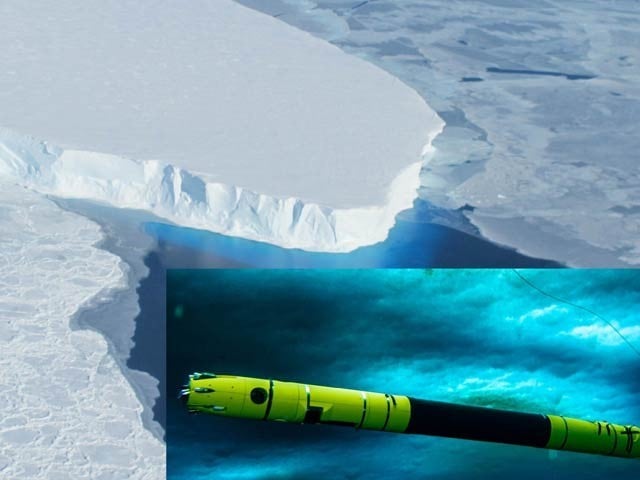
A state-of-the-art swimming robot has been built to keep an eye on the Thwaites Glacier in West Antarctica. Photo: Courtesy of the Melt Project
Antarctica: A huge glacier called the Thwaites in West Antarctica continues to melt and people have described its destruction as a great tragedy. Now a robot has been developed to understand the complex process of its melting.
This robot has been named ‘Icefin’ while experts believe that its melting could have profound negative effects on the planet. But the process of melting in this glacier is so complex that it was recently published in the form of two research papers in the journal Nature.
This glacier is larger than the city of Florida, but understanding its rate of melting is crucial. Subsurface ice melt is accelerating, but still slower and slightly lower than our scientific predictions and models.
The ice fin has been developed by American experts and is currently floating below the McMurdo Research Station. Ice fins have revealed that melting between the crevasses and slopes of the glacier continues at a rapid pace, but the ice beneath the ice sheet is melting less.
Experts are worried that the ice is melting from the flat parts of the glacier, while the rate of melting is much higher on the slopes and ridges. Then there is a grounding zone of the glacier where it meets the water and its volume has reduced by 14 km compared to 1990.
According to experts, it is now impossible to compensate for this loss and in the next centuries the total disappearance of the Thwaites Glacier could lead to a global sea level rise of 1.64.
(function(d, s, id){
var js, fjs = d.getElementsByTagName(s)[0];
if (d.getElementById(id)) {return;}
js = d.createElement(s); js.id = id;
js.src = “//connect.facebook.net/en_US/sdk.js#xfbml=1&version=v2.3&appId=770767426360150”;
fjs.parentNode.insertBefore(js, fjs);
}(document, ‘script’, ‘facebook-jssdk’));
(function(d, s, id) {
var js, fjs = d.getElementsByTagName(s)[0];
if (d.getElementById(id)) return;
js = d.createElement(s); js.id = id;
js.src = “//connect.facebook.net/en_GB/sdk.js#xfbml=1&version=v2.7”;
fjs.parentNode.insertBefore(js, fjs);
}(document, ‘script’, ‘facebook-jssdk’));



